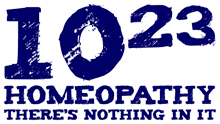Note that some links will break as pages are moved, websites are abandoned, etc.
If this happens, please try searching for the page in the Wayback Machine at www.archive.org.

Recommended books, journals and newletters.
Thanks to Joe Magrath, Ph.D., for reviewing the book titles marked with an asterisk.
Related links
By Professor Shaun Holt. Published by Craig Potton Publishing, July 2010. ISBN 9781877517211. Contains 124 pages. Price $29.99: “This book provides an evidence-based overview of the use of complementary therapies for cancer. It has been written for anyone with cancer and for health care professionals who care for such patients…Whether we like it or not, our patients are using CAM and other natural therapies, and health care practitioners need to understand the basic principles of these therapies and know which have a solid scientific basis and can be recommended. This is particularly the case for patients with cancer, half of whom will use CAM therapies and almost all of the remainder will look at using them and seek information, often from their doctor. With respect to health care professionals, the utility of the book is neatly captured in the powerful forward written by Dr Belinda Scott who says....”no patient should waste their valuable energy, time or money on treatments that have not been scientifically proven...it matters to me that Shaun referred to sound scientific studies when recommending or dismissing a therapy.” In addition, the book is endorsed by the world’s leading expert on CAM therapies and the co-author of Trick or Treatment, Professor Edzard Ernst, who says in the cover notes...”this book is a much-needed assistance for vulnerable and often desperate people. It should be made available for all cancer patients who feel tempted to try some form of complementary medicine.” Some of the research findings are surprisingly robust, for example, a study of over 600 participants with chemotherapy-induced nausea not only demonstrated clear benefits of ginger but also determined a dose-response relationship. There are numerous fascinating facts; for example, shark cartilage is promoted as a cancer cure on the basis that sharks do not get cancer, whereas the reality is that over 40 types of cancer have been described in sharks.” Reviewed by Richard Beasley, Professor, Medical Research Institute of New Zealand, Wellington. New Zealand Medical Journal (17th December 2010, Vol 123 No 1327)
Magner, George, (Prometheus, 1995) This book is an excellent adjunct to Inside Chiropractic. The author founded an organization called Victims of Chiropractic; yet, despite his potential bias, this is a painstakingly researched and accurate criticism of the profession. In addition, although Magner is less sympathetic to the profession than Homola, he also offers suggestions for change.
(Science Based Medicine)
A free weekly e-mail newsletter edited by Stephen Barrett, M.D., with help from William M. London, Ed.D., M.P.H.. It summarises scientific reports; legislative developments; enforcement actions; other news items; Web site evaluations; recommended and nonrecommended books; research tips; and other information relevant to consumer protection and consumer decision-making.
In January 2001, the American-based National Council Against Health Fraud (NCAHF) began distributing a free weekly e-mail newsletter edited by Stephen Barrett, M.D., and co-sponsored by Quackwatch. It summarises scientific reports; legislative developments; enforcement actions; news reports; website evaluations; recommended and non-recommended books; research tips; and other information relevant to consumer protection and consumer decision-making. Subscribe to the newsletter via this link.
Written by James Randi (Prometheus Books UK, 2nd revised edition, May 1989) A devastating exposé of the fakery of modern "healers".
Written by Robert L. Park (Oxford University Press, 2000) "Scientific error", says Robert Park, "has a way of evolving… from self-delusion to fraud. I use the term voodoo science to cover them all: pathological science, junk science, pseudoscience, and fraudulent science." In pathological science, scientists fool themselves. Junk science is when scientists use their expertise to befuddle and mislead others (usually juries or lawmakers). Pseudoscience has the trappings of science without any evidence. Fraud is old-fashioned lying. [Robert L. Park is professor of physics at the University of Maryland]
Written by John Diamond (Vintage, July 2001) At the time of his death, on March 2nd, 2001, John Diamond had written six chapters of Snake Oil. Intended to be "an uncomplimentary view of complementary medicine", he was spurred into writing the book by the 5,000 letters he received suggesting alternative cures for his terminal cancer. In the book Diamond sets out to prove that the protagonists of alternativism are, at best, gullible and misguided, at worst, con-merchants and quacks. The uncompleted book ends with the words: "Let me explain." Unfortunately, he wasn't given the chance. The remainder of the book is made up from a selection of Diamond's articles and columns, which, edited by brother-in-law Dominic Lawson, were chosen on "the basis of his humour rather than his tumour".
Written by Paul Benedetti and Wayne MacPhail (Dundurn Group Ltd ,Canada, January 2002) Canadians visit chiropractors about thirty million times a year, and surveys show that patients are generally satisfied with their treatment. But studies also show that as many as two hundred Canadians a year suffer strokes brought on by neck manipulation. Spin Doctors takes a hard, dramatic, and spine-chilling look into the world of chiropractic medicine. You will be surprised to learn what chiropractors treat and why. Most importantly, you'll learn how to protect yourself and your family from dangerous adjustments, practice-building tactics, bogus treatments, and misleading information.
Edited by Tiffany Jenkins (Hodder Arnold and Stoughton, May 2002) In this book contributors from a variety of healthcare backgrounds make the case for and against CAM (Complementary and Alternative Medicine). The book may now be out-of-print, but inexpensive copies can be bought second-hand via this link.
Written by Robert Todd Carroll (Wiley, 1st edition, August 2003) A wealth of evidence for doubters and disbelievers featuring close to 400 definitions, arguments, and essays on topics ranging from acupuncture to zombies. The Skeptic's Dictionary is a lively, commonsense trove of detailed information on all things supernatural, occult, paranormal, and pseudoscientific. For the open-minded seeker, the soft or hardened skeptic, and the believing doubter, this book offers a remarkable range of information that puts to the test the best arguments of true believers. [This link is to the Skeptic's Dictionary website which shows how the book can be ordered in many different countries.]
Written by C. Heneghan and D. Badenoch (Oxford: Blackwell Publishing, 2nd edition, 2006) This booklet sets out the concepts of EBM in its most simple and understandable terms. To the novice it can serve as an ideal, brief introduction. To the more experienced healthcare professional it can be a quick reminder of the essential points.
Written by Edzard Ernst (Ed.), Max H. Pittler (Ed.), Barbara Wider (Ed.) (Mosby, 2nd edition, June 2006) The new edition of this highly successful essential desk reference provides evidence-based information on 69 popular forms of complementary and alternative medicine (CAM) and 46 common conditions frequently treated with CAM. Each section includes an analysis of the most up-to-date research available.
(Science Based Medicine)
Butler, Kurt, (Prometheus, 1992) The Consumer's Guide is less extensive than Health Robbers. However, it contains complementary information that is useful to a student of AM (Alternative Medicine), and readers may prefer its less formal writing style. In particular, Chapter 5 reviews some topics not found in Health Robbers, and Chapter 6 discusses tabloid journalism from a different point of view. The most popular forms of AM are gathered and discussed concisely in Chapter 4.
Barrett, Stephen and Victor Herbert, (Prometheus, 1994) This volume is the culmination of twenty years of research into the "health food" industry. Chapter 2 of this book (Thirty Ways to Spot Quacks and Pushers), alone, makes the book worthwhile. According to the preface, the text addresses four questions: 1) How is the industry organized? 2) How are the salespeople trained? 3) How do they convince the public to believe false ideas? 4) How do they get away with it? The book contains valid nutrition information and exposes the misinformation available in health food stores.
FACT is a quarterly online review journal that aims to present the evidence on complementary and alternative medicine (CAM) in an analytical and impartial manner. All volumes of the journal can be accessed via this link by clicking on the 'contents' section. [Editor in Chief: Professor Edzard Ernst, Laing Chair in Complementary Medicine, Peninsula Medical School, Universities of Exeter and Plymouth, UK.]
Barrett, Stephen and Ronald Gots, (Prometheus. 1998, 212p. index. LC 97-53181 ISBN 1-57392-195-5 $32) From Chapter 1: "Many recipients of these diagnoses wind up being financially exploited as well as mistreated." Specifically, there are chapters on "multiple chemical sensitivity," "candidiasis," "sick buildings," "mercury-amalgam," and the "Gulf War connection." The first four chapters remain useful, the last is out of date. The bottom line is that people given those (first four) diagnoses are seriously ill and in need of treatment; they just do not have the disorders implied by those descriptions.
Homola, Samuel, (Prometheus, 1999) This is the definitive text on chiropractic. Samuel Homola, D.C., who is retired after more than 40 years of practice, has authoritatively criticized chiropractic since the start of his career. This book gives his ultimate assessment of the business. However, Homola thinks that chiropractors can mend their ways and adopt evidence-based treatments, much like physical therapists. That seems to have been true for him; but I doubt many other chiropractors are capable of it.
Tavris, Carol, Scott Lilienfeld, Steven Lynn and Jeffrey Lohr, eds. (Guilford Press, 2003) This compendium is for people seeking reliable information on the status of controversial methods of clinical psychology. The sixteen chapters are divided into five subjects: "Controversies in Assessment and Diagnosis," "General controversies in Psychotherapy," "Controversies in the Treatment of Specific Adult Diseases," "Controversies in the Treatment of Specific Child Disorders" and "Controversies Regarding Self-Help and the Media." Specific topics include attention-deficit/hyperactivity disorder, stress disorders, and "recovered memory." Current fad treatments (e.g., "eye movement desensitization and reprocessing," and "thought field therapy") are criticized in the book. Even old, well-established tests, such as the Rohrschach ink blot, are critically re-examined by the authors. Although this is written as a textbook, it is easy to understand by the layman.




